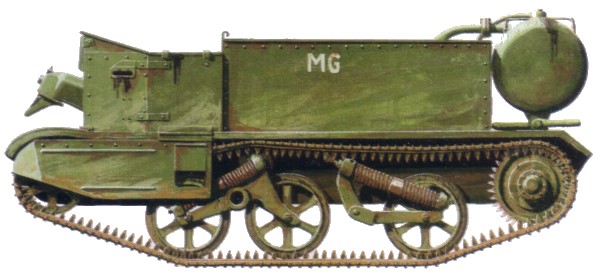
Amazon Audible Gift Memberships
Wasp


Wasp

The first British use of flamethrowers in connection with mobile warfare was during 1940, when the newly established Petroleum Warfare Department developed a flame projector known as the Ronson. This had a relatively short range and was mounted on a Universal Carrier with the fuel and compressed gas tanks over the rear of the vehicle, For various reasons the British army decided not to proceed with the Ronson, requesting more range, but the Canadians persevered with the design, and later in the war it was adopted by the US Army, who called it the Satan.
By 1942 the PWD had developed the Ronson to the stage where ranges of 80 to 100 yards were being reached and this improved device was put into production as the Wasp Mk I. In September 1942 an order for 1,000 was placed and by November the following year all had been delivered. These Wasp Mk Is used a large projector gun that was routed over the top of the carrier and connected to two fuel tanks inside the carrier hull. However, these Mk Is were deemed unsuitable for service as by then a Wasp Mk II had appeared with a much smaller and handier flame projector mounted at the front in place of the machine-gun otherwise carried. This new flame projector was a great advance over the previous design and gave a much better flame performance even though there was no improvement in range; the same type of projector was also used with the Churchill Crocodile. It was also easier to aim and much safer to use.
The Wasp Mk II first went into action during the Normandy fighting of July 1944. They were used mainly in support of infantry operations, whereas the Crocodile was used in conjunction with armoured formations. They were dreadfully effective weapons, and greatly feared by the unfortunate Germans who had to bear their effects, though for fear of these effects German infantry opposition very often ceased once the Wasps had arrived on the scene.
It was not long before the Wasp Mk IIs were joined by yet another Wasp variant, this time the Wasp Mk IIC - the suffix denoting Canada for the Canadians had also developed their own version of Wasp. They decided that to devote a Universal Carrier to the flamethrower role only was rather wasteful in vehicles and they redesigned the Wasp so that the Carrier could also function as a normal Carrier if it had to. Accordingly they moved the fuel tanks to a location outside the rear of the vehicle, and replaced the arrangement of two tanks with a single 75-Imp gal (341-litre) tank. This gave room inside the open hull for a third crew member, who could carry a light machine-gun. This gave the Wasp MkC much more tactical flexibility and it gradually came to be preferred type. In June 1944 all Wasp production was switched to the Mk IIC standard, and field conversions were also made, using the existing A& II 61-gal (272.7-litre) tanks. Operational experience demonstrated the need for more frontal armour, and many Wasp Mk IICs were fitted with plastic armour over the front hull plates.
 |
The Wasp MkIIC was the Canadian version of the British Wasp, and carried its fuel in a single tank a t the rear; the British Wasp Mk II had two internal tanks. The Wasp was a conversion of the Universal Carrier for the flame role first tested in 1943. |
Some Wasps were fitted with special smoke-producing equipment, and a few had wading screens installed for possible use during amphibious operations. The Canadians demonstrated their interest in flamethrower tanks by fitting Wasp equipments to old Ram tanks to produce the Badger. These conversions were carried out in the UK for the Canadian 1st Army. Early Badgers did not have turrets, though later versions did, the turretless versions being based on Ram Kangaroo personnel carriers. They were used by the Canadians from February 1945 onwards.
During early 1945 three Wasps and a quantity of their thickened fuel were sent to the USSR. What the Soviets made of them has not been recorded.
